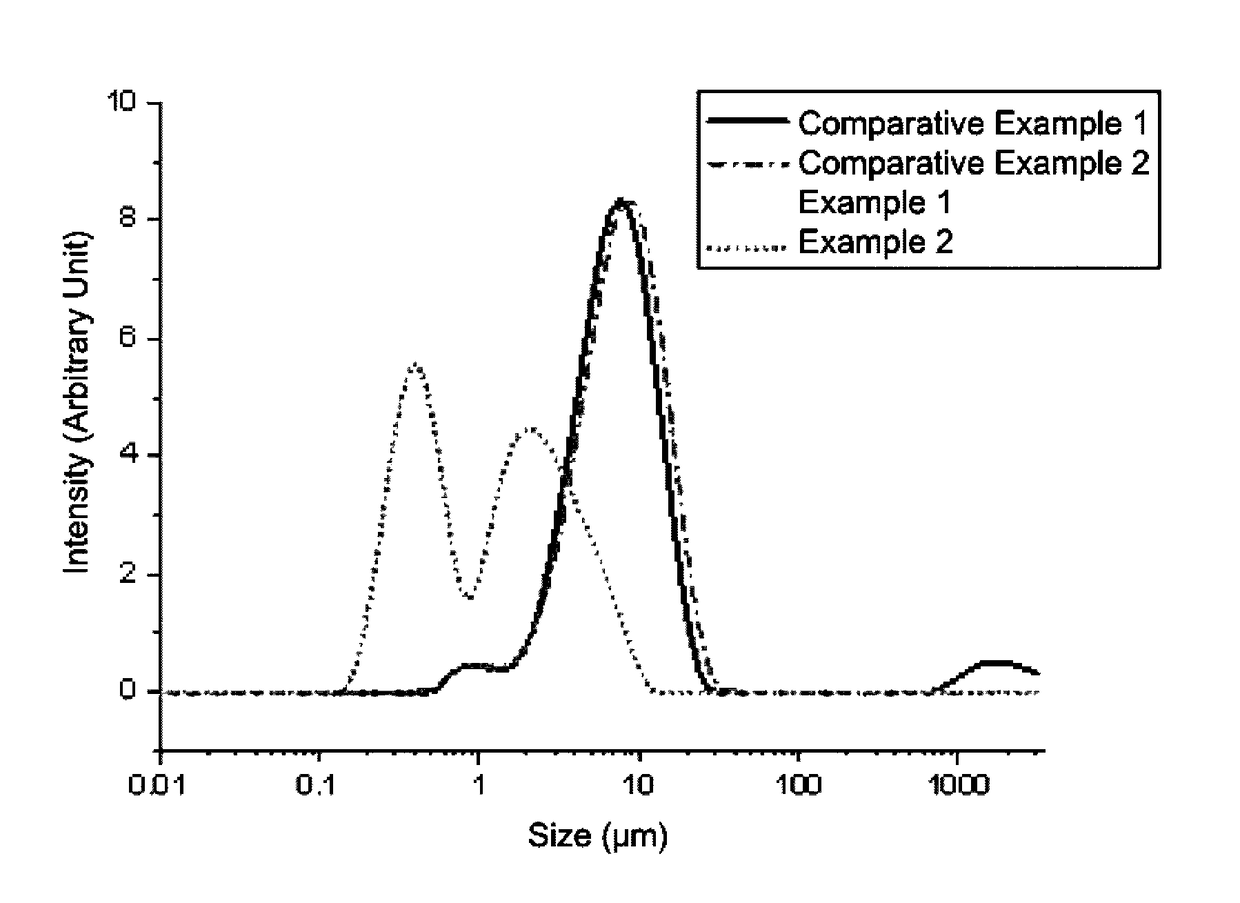Organic zinc catalyst, preparation method thereof, and method of preparing poly(alkylene carbonate) resin using the same
a zinc catalyst and organic technology, applied in the preparation of organic compounds, physical/chemical process catalysts, carboxylic compound preparations, etc., can solve the problems of reducing the activity of the catalyst, difficult to control the zinc dicarboxylate-based catalyst, heterogeneous crystallinity, etc., to achieve excellent activity and fine and uniform particle siz
- Summary
- Abstract
- Description
- Claims
- Application Information
AI Technical Summary
Benefits of technology
Problems solved by technology
Method used
Image
Examples
example 1
[0078]In a 250 mL round bottom flask, 75 ml of toluene, 50 mmol of ZnO powder, and 2% by weight of a phosphate-based anionic surfactant represented by the following formula (Crodafos CS2A, manufactured by CRODA) based on ZnO were added, and vigorously stirred at room temperature for 20 min to prepare a surface-treated ZnO dispersed solution (ZnO dispersion).
[0079]
[0080]50 mmol of glutaric acid was added to the ZnO dispersion at room temperature, and then the temperature was raised to 60° C., followed by reaction under vigorous stirring for 10 h.
[0081]Thereafter, the reaction vessel was cooled to room temperature, and a precipitate was separated by filtration. The separated precipitate was washed with acetone three times or more. The washed precipitate was dried in a vacuum oven at 85° C. for 12 h, and finally, 9.3 g of a zinc glutarate (ZnGA) catalyst was obtained (yield of about 95%).
example 2
[0082]9.2 g of a ZnGA catalyst (yield of about 94%) was obtained in the same manner as in Example 1, except that a cationic surfactant (DISPERBYK-163, manufactured by BYK; amine value of 10 mg KOH / g, density of 0.99 g / ml at 20° C.) was used instead of the phosphate-based anionic surfactant during the preparation of the ZnO dispersion.
example 3
[0083]8.8 g of a ZnGA catalyst (yield of about 90%) was obtained in the same manner as in Example 1, except that a phosphate-based amphiphilic surfactant (DISPERBYK-180, manufactured by BYK; amine value of 94 mg KOH / g, acid value of 94 mg KOH / g, density of 1.08 g / ml at 20° C.) was used instead of the phosphate-based anionic surfactant during the preparation of the ZnO dispersion.
PUM
| Property | Measurement | Unit |
|---|---|---|
| particle size distribution | aaaaa | aaaaa |
| specific surface area | aaaaa | aaaaa |
| particle size | aaaaa | aaaaa |
Abstract
Description
Claims
Application Information
 Login to View More
Login to View More - R&D
- Intellectual Property
- Life Sciences
- Materials
- Tech Scout
- Unparalleled Data Quality
- Higher Quality Content
- 60% Fewer Hallucinations
Browse by: Latest US Patents, China's latest patents, Technical Efficacy Thesaurus, Application Domain, Technology Topic, Popular Technical Reports.
© 2025 PatSnap. All rights reserved.Legal|Privacy policy|Modern Slavery Act Transparency Statement|Sitemap|About US| Contact US: help@patsnap.com



